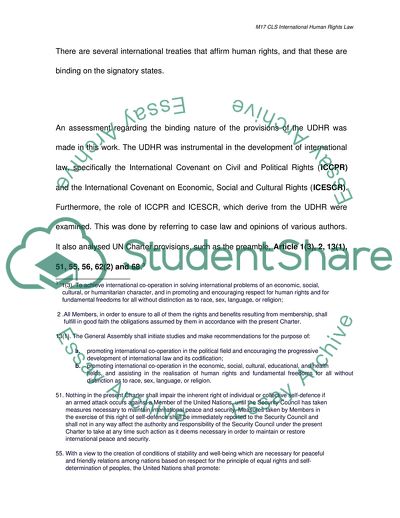Cite this document
(Universal Declaration of Human Rights Case Study, n.d.)
Universal Declaration of Human Rights Case Study. https://studentshare.org/law/1728806-which-substantive-provision-of-the-universal-declaration-human-rights-have-established-its-binding-nature-in-human-rights-law-and-have-become-binding-on-all-states
Universal Declaration of Human Rights Case Study. https://studentshare.org/law/1728806-which-substantive-provision-of-the-universal-declaration-human-rights-have-established-its-binding-nature-in-human-rights-law-and-have-become-binding-on-all-states
(Universal Declaration of Human Rights Case Study)
Universal Declaration of Human Rights Case Study. https://studentshare.org/law/1728806-which-substantive-provision-of-the-universal-declaration-human-rights-have-established-its-binding-nature-in-human-rights-law-and-have-become-binding-on-all-states.
Universal Declaration of Human Rights Case Study. https://studentshare.org/law/1728806-which-substantive-provision-of-the-universal-declaration-human-rights-have-established-its-binding-nature-in-human-rights-law-and-have-become-binding-on-all-states.
“Universal Declaration of Human Rights Case Study”. https://studentshare.org/law/1728806-which-substantive-provision-of-the-universal-declaration-human-rights-have-established-its-binding-nature-in-human-rights-law-and-have-become-binding-on-all-states.


